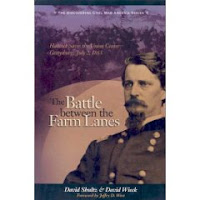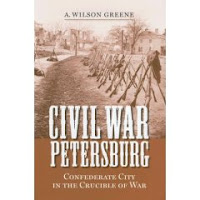
Seeing the Elephant: Raw Recruits at the Battle of Shiloh, Joseph Allan Frank and George A. Reaves, 215 pp., paperbound, bibliography, index, chapter notes, citations in text, University of Illinois Press, 2003. $14.95
The authors have created a marvelous study of the 90,000 soldiers who saw combat on April 6th and 7th, 1862 in western Tennessee, a few miles north of Corinth, Mississippi. Like First Manassas, Shiloh taught the citizens of the Union and Confederacy something unexpected. First Masassas taught that the war would not end in 90 days. Shiloh taught that the war would be extremely bloody. With 23,000 in two days fighting, Shiloh ranks with Antietam as one of the costliest battles in the briefest amount of time.
The authors' Introduction sets the tone by immediately presenting three soldiers' view of their experience of combat: drama, trauma, and matter-of-fact. They offer seven categories for how a raw recruit is prepared to preceive combat. A soldier's moral is conditional upon: tactical preparation, political attitudes, logistics, leadership, espirit de corps, comradeship and officier competence. Also, the authors present a bibliographic review of other writings on 'seeing the elephant.'
Studies of heroic romanticism, training and leadership, and combat morale are briefly discussed and the literature in the field is outlined succinctly.
The method of reseach is described and impresses the reader. The authors used 450 diaries and letter collections from 160 regiments and batteries that had not seen combat until Shiloh. Of the 450 soldiers' papers, Reaves and Frank retained 381 soldiers' works that contained enough information to be placed in a data set. Of course, the material was inchoate, spread among letters, diaries and reminiences.
The authors approached this material with 76 questions. If answers to 10 of these questions were found in the soldiers' material, then the source documents were admitted to the data set. The vast majority of the material in the data set was created during the first year of the war.
At the very beginning, the authors set aside "one-dimensional approaches emphasizing, for example, a Victorian heroic ethos or a single factors such as comradship." Reaves, a National Park Ranger serving at Shiloh National Battlefield Park, and Frank, a academic historian, offer an exemplary work of history.






